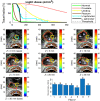Perspectives on interstitial photodynamic therapy for malignant tumors
- PMID: 34302323
- PMCID: PMC8299827
- DOI: 10.1117/1.JBO.26.7.070604
Perspectives on interstitial photodynamic therapy for malignant tumors
Abstract
Significance: Despite remarkable advances in the core modalities used in combating cancer, malignant diseases remain the second largest cause of death globally. Interstitial photodynamic therapy (IPDT) has emerged as an alternative approach for the treatment of solid tumors.
Aim: The aim of our study is to outline the advancements in IPDT in recent years and provide our vision for the inclusion of IPDT in standard-of-care (SoC) treatment guidelines of specific malignant diseases.
Approach: First, the SoC treatment for solid tumors is described, and the attractive properties of IPDT are presented. Second, the application of IPDT for selected types of tumors is discussed. Finally, future opportunities are considered.
Results: Strong research efforts in academic, clinical, and industrial settings have led to significant improvements in the current implementation of IPDT, and these studies have demonstrated the unique advantages of this modality for the treatment of solid tumors. It is envisioned that further randomized prospective clinical trials and treatment optimization will enable a wide acceptance of IPDT in the clinical community and inclusion in SoC guidelines for well-defined clinical indications.
Conclusions: The minimally invasive nature of this treatment modality combined with the relatively mild side effects makes IPDT a compelling alternative option for treatment in a number of clinical applications. The adaptability of this technique provides many opportunities to both optimize and personalize the treatment.
Keywords: dosimetry; interstitial photodynamic therapy; photosensitizers; solid tumors.
Figures



References
-
- “Cancer Statistics-National Cancer Institute,” https://www.cancer.gov/about-cancer/understanding/statistics (accessed 16 March 2021).
Publication types
MeSH terms
LinkOut - more resources
Full Text Sources
Medical

